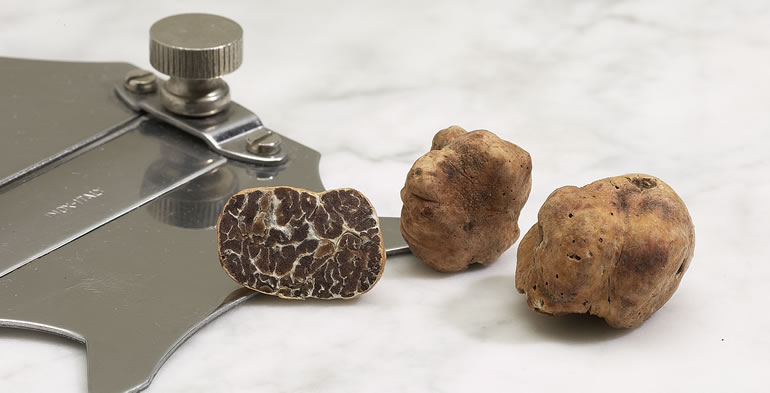-
Whitish Truffle (Tuber Borchii Vitt.)

Organoleptic features: the name of this truffle probably derives from the fact that it has a light-colored outer skin like the white truffle but is usually smaller and of lower quality since its aroma tends to be more decisive, less elegant and more alliaceous. However, from mid-January to the end of April, it is perfectly suitable for enhancing typical Tuscan dishes at a modest price compared to the white truffle, as well as for its ability to marry traditional dishes, either first courses or meat-based second courses.
Symbiotic arboreal species: this fungus easily establishes symbioses with various herbaceous species in natural surroundings such as woods, often with mixtures of pine and oak, and is also quite common in patches of black pine and arboriculture plantations for wood production, with a specific predilection for woods of stone pine. Truffle-growers in the Mugello say that, in the past, the intensive utilization of the soil by sharecroppers, who even grassed the slopes of the banks with forage species, produced symbioses between this truffle and sainfoin.
Adjuvant shrubs: typical are the associations with juniper at the edges of woods and with the junipers in the undergrowth.
